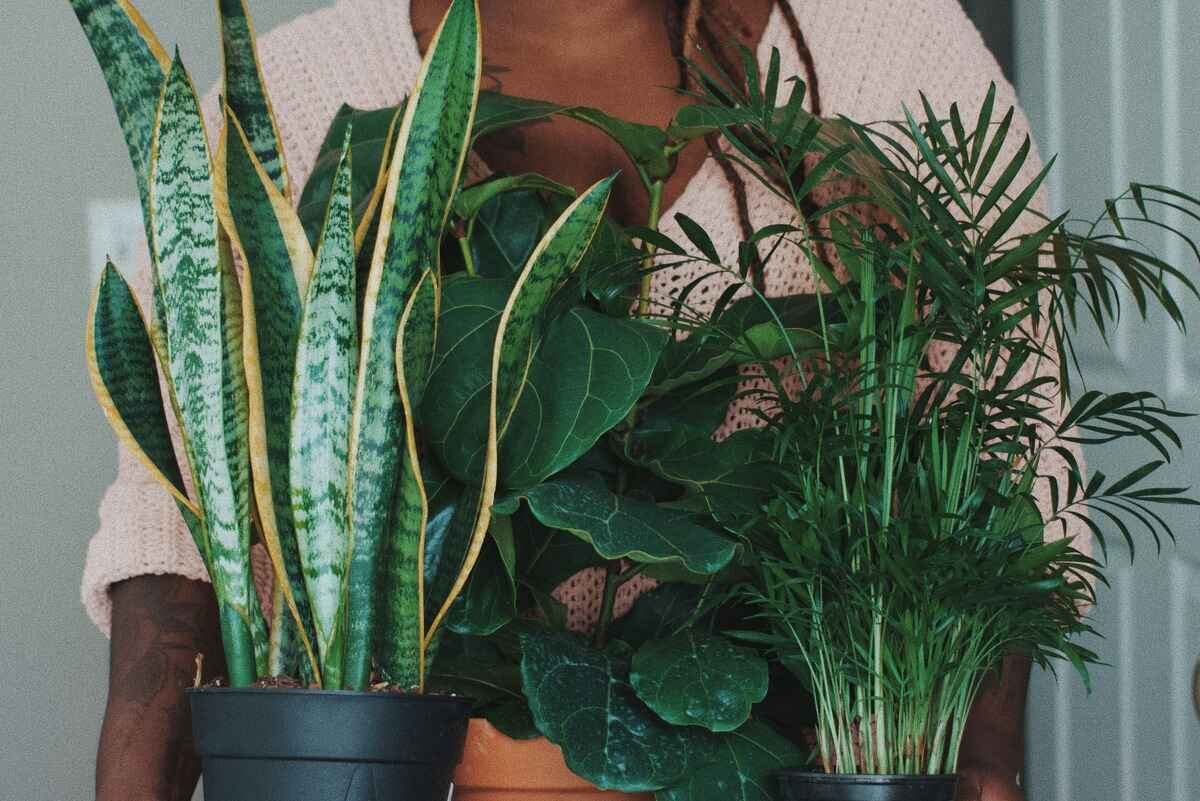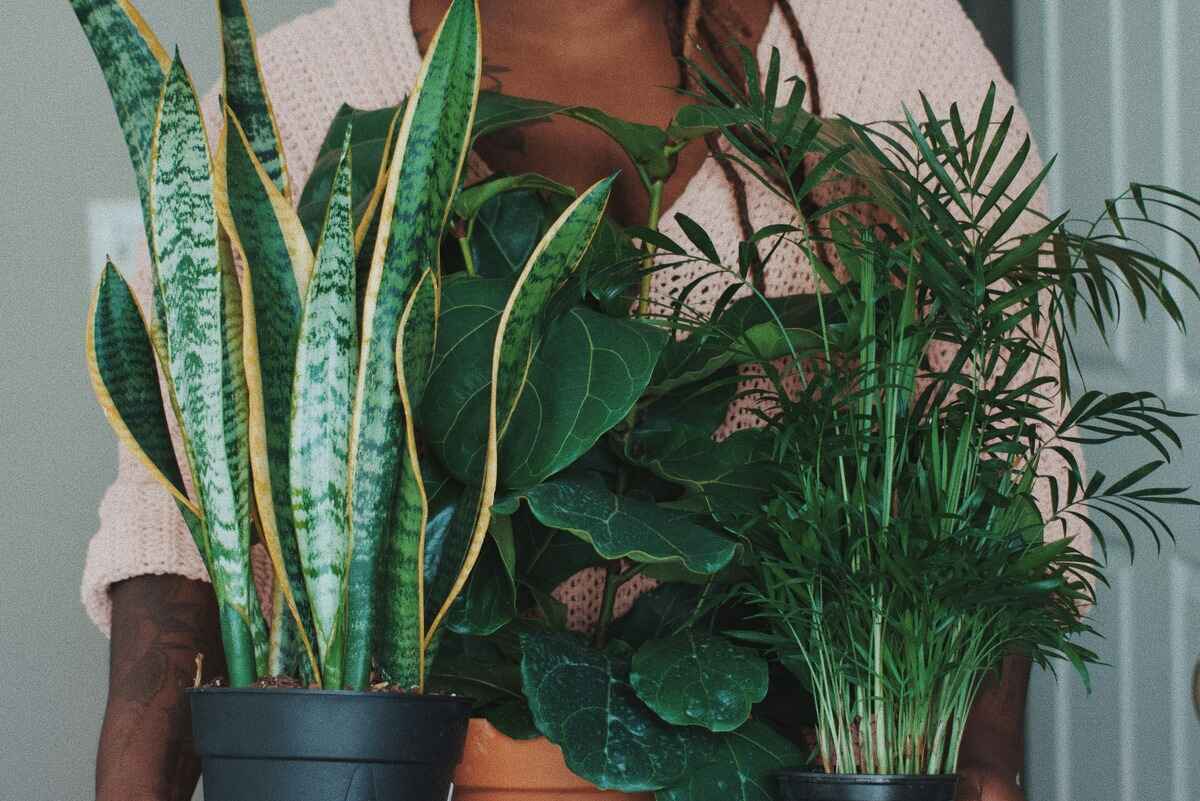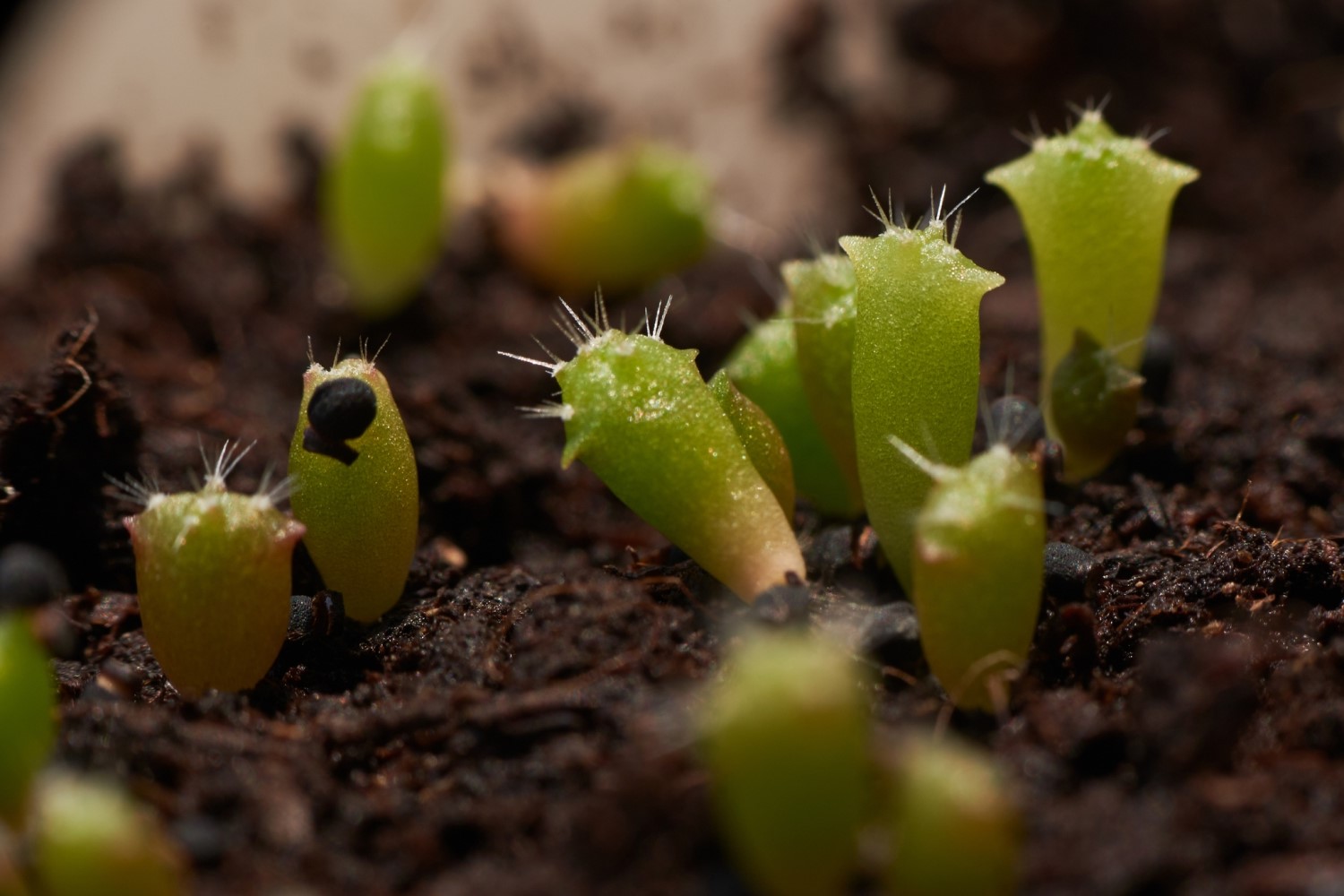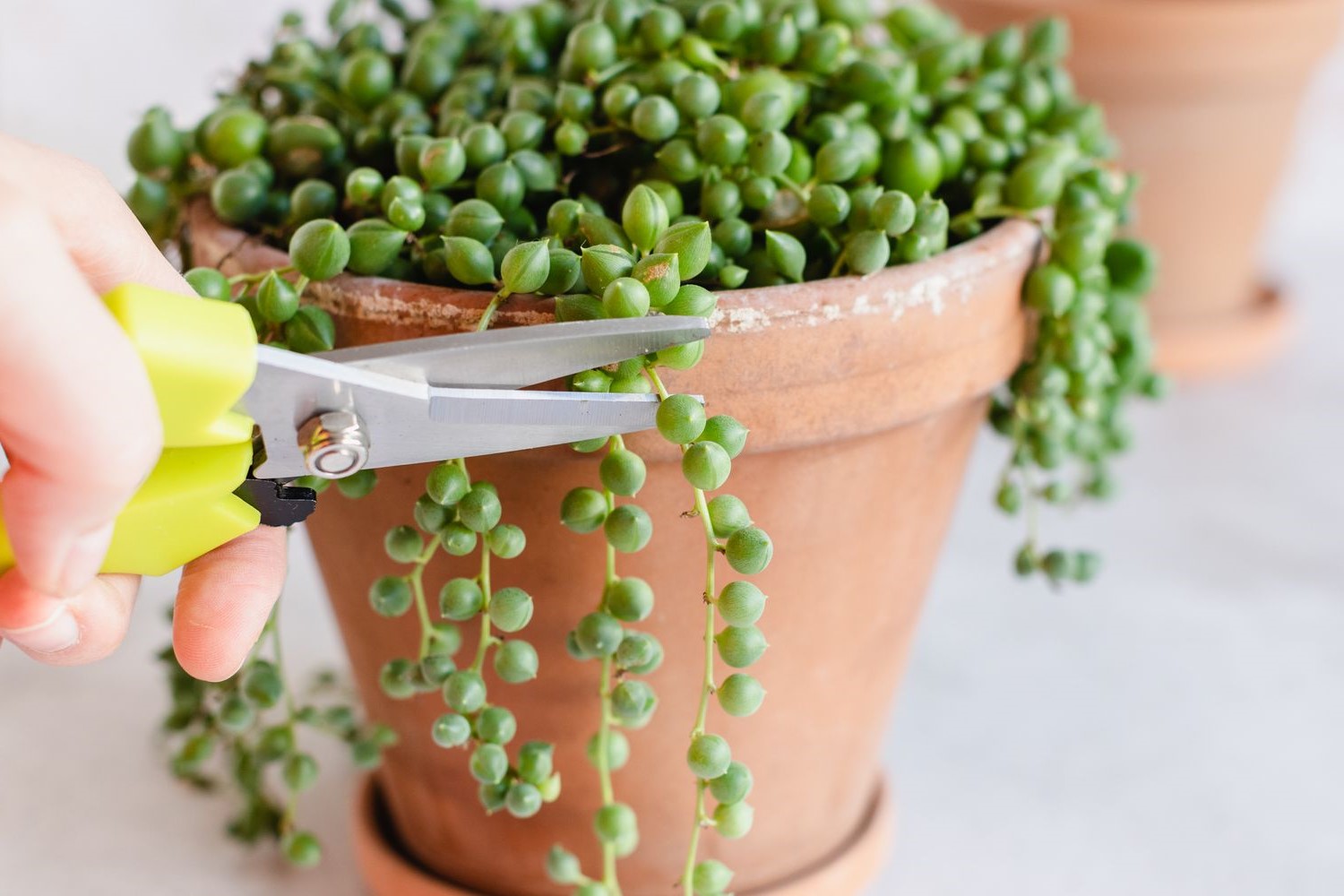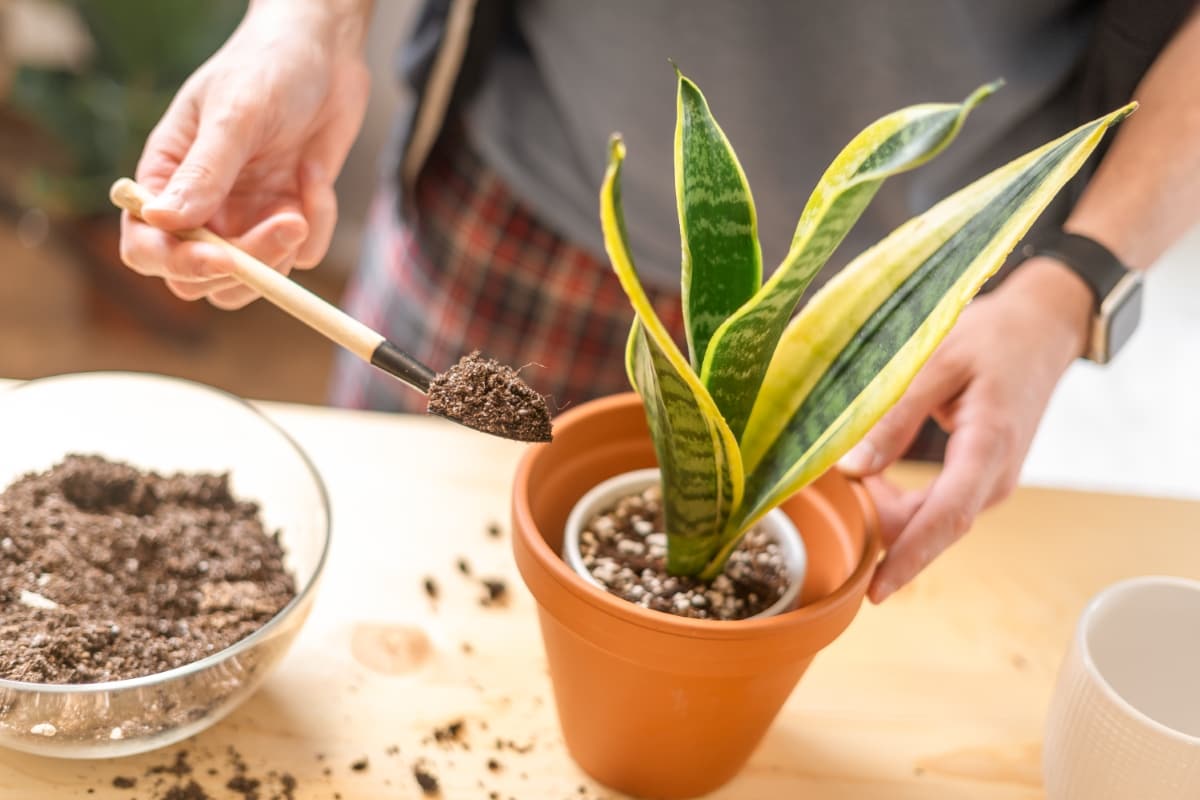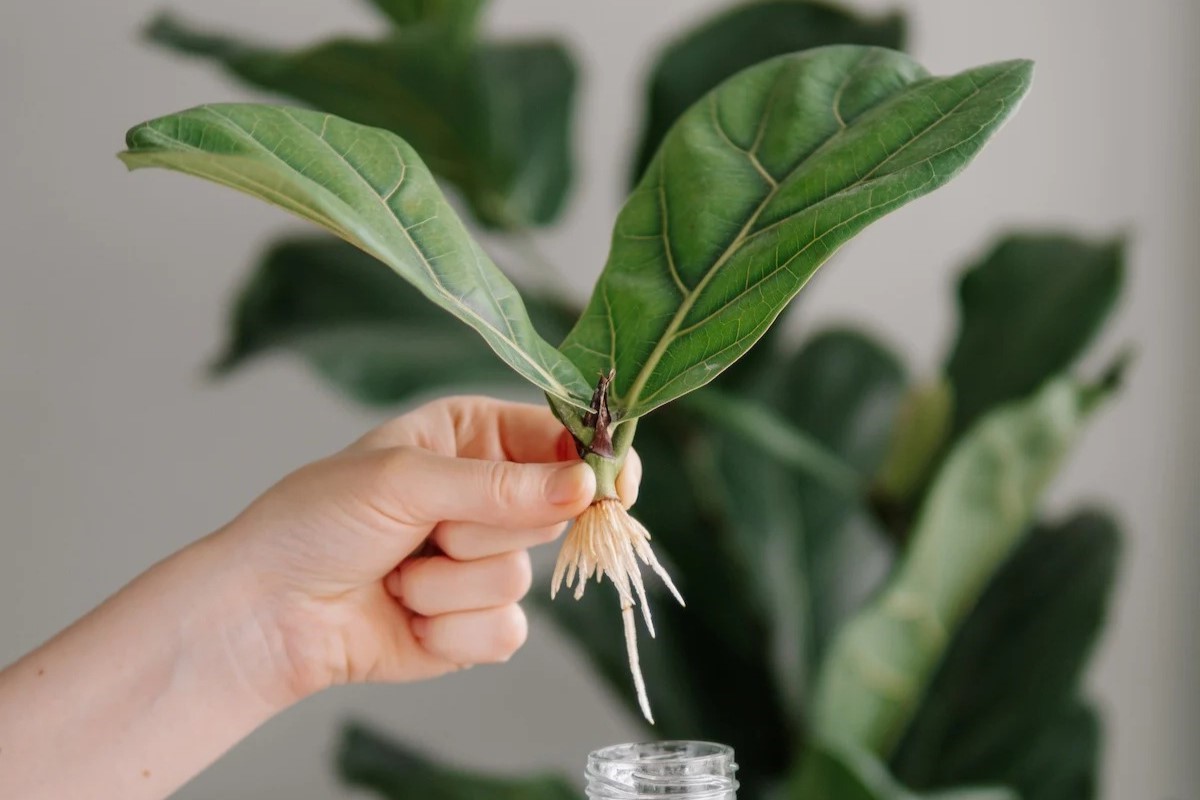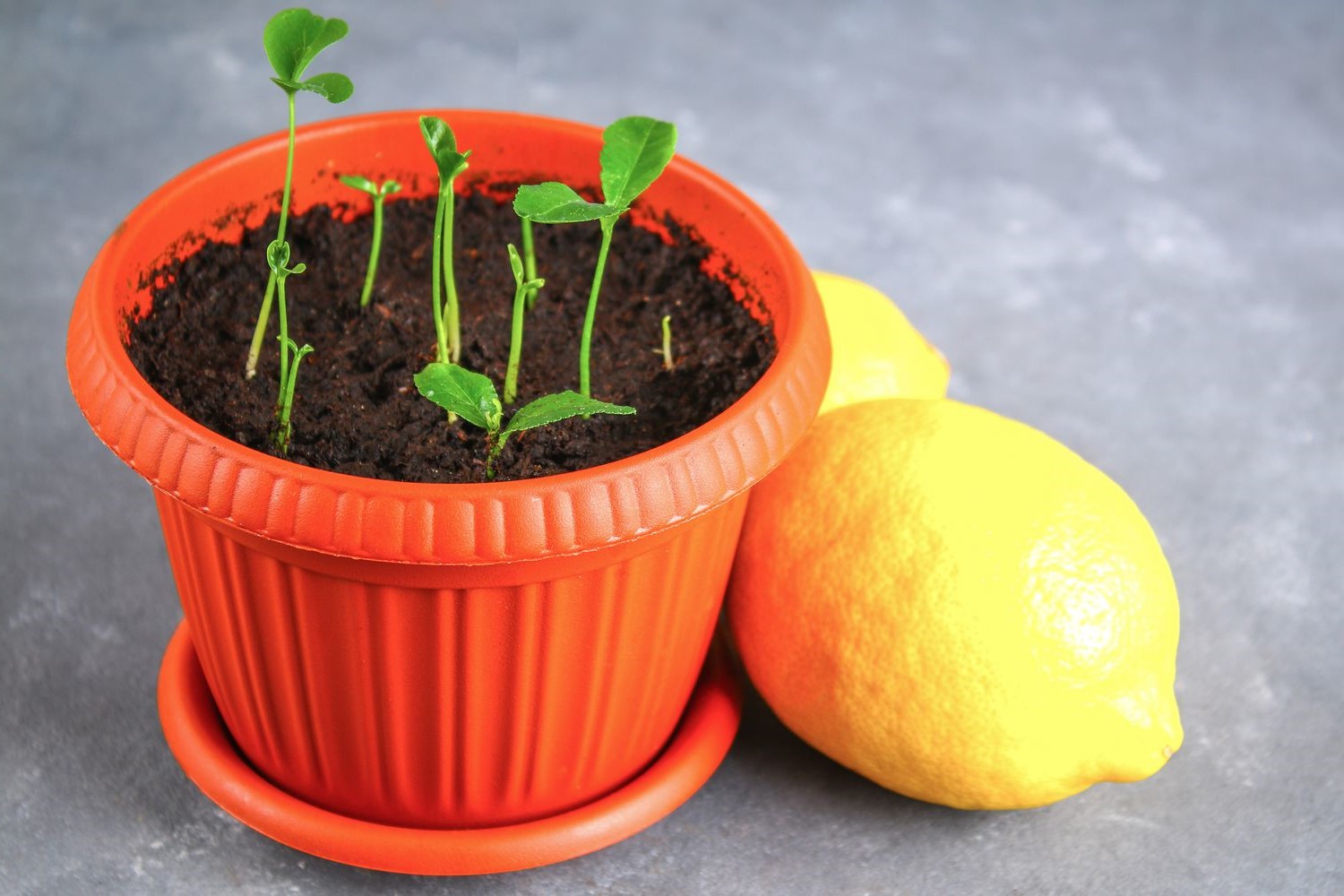Home>Home and Garden>How To Propagate Snake Plants
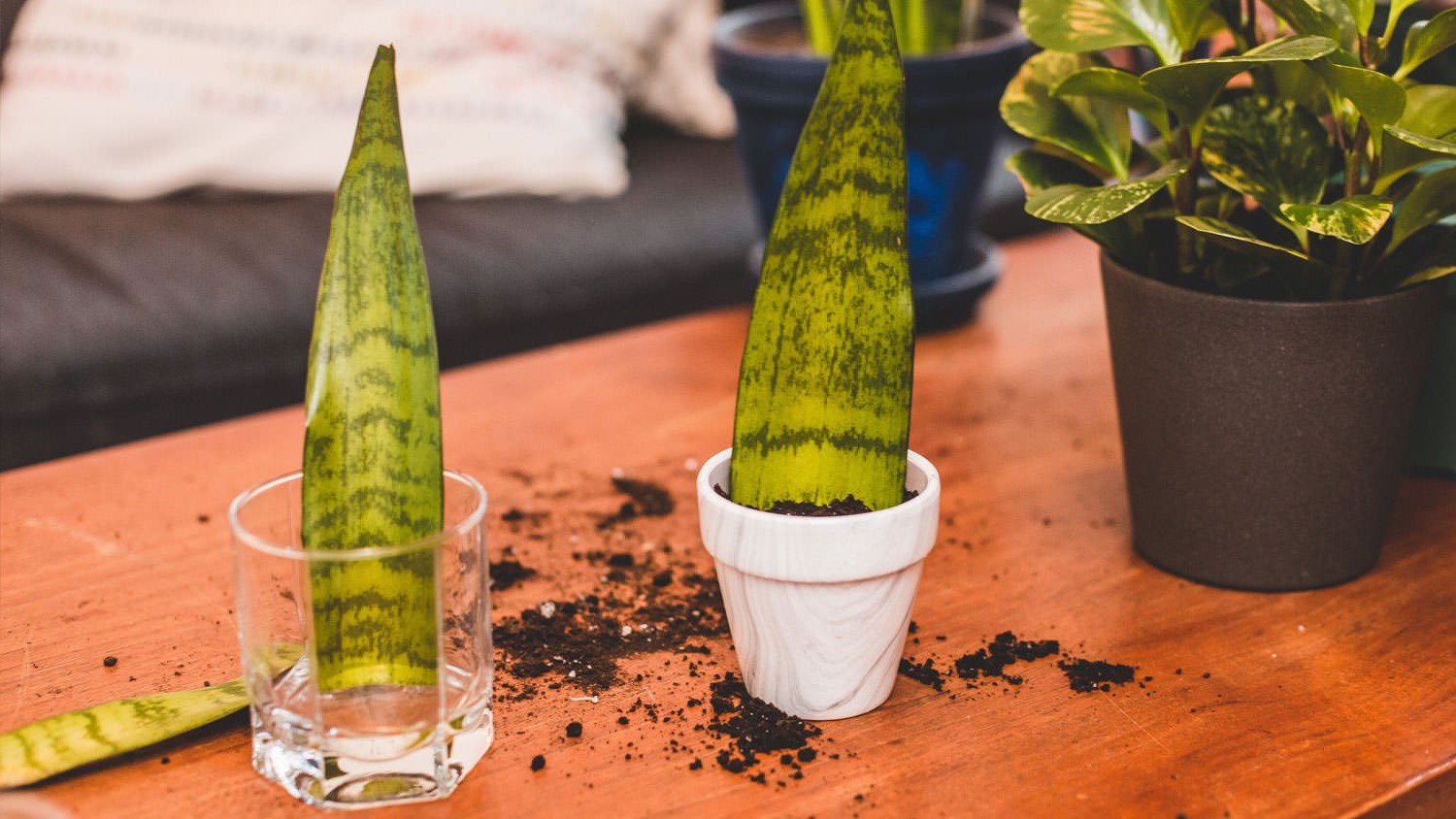

Home and Garden
How To Propagate Snake Plants
Published: March 2, 2024
Learn how to propagate snake plants at home and enhance your garden with these easy tips and techniques. Grow your indoor garden with confidence!
(Many of the links in this article redirect to a specific reviewed product. Your purchase of these products through affiliate links helps to generate commission for Noodls.com, at no extra cost. Learn more)
Table of Contents
Introduction
Snake plants, also known as Sansevieria, are renowned for their striking appearance and air-purifying qualities, making them a popular choice for indoor plant enthusiasts. With their long, upright leaves and low maintenance requirements, snake plants have become a staple in many households and offices.
In this comprehensive guide, we will delve into the art of propagating snake plants, allowing you to expand your collection or share the beauty of these resilient plants with friends and family. Whether you're a seasoned plant parent or a novice green thumb, learning the various propagation methods for snake plants can be a rewarding and fulfilling experience.
By understanding the intricacies of snake plant propagation, you'll gain valuable insights into nurturing and expanding your plant collection. From leaf cuttings to division and rhizome cuttings, each method offers a unique approach to multiplying your beloved snake plants. Additionally, we'll explore the essential care tips for newly propagated snake plants, ensuring their successful growth and development.
Join us on this journey as we uncover the secrets of propagating snake plants, empowering you to cultivate thriving greenery and share the joy of plant parenthood with others. Let's embark on this enriching adventure and unlock the wonders of snake plant propagation together.
Read more: How To Propagate Rubber Plant
Understanding Snake Plants
Snake plants, scientifically known as Sansevieria, are revered for their remarkable resilience and striking appearance. These hardy succulents are characterized by their long, sword-shaped leaves that stand upright, creating an elegant and architectural presence in any space. Originating from West Africa, snake plants have adapted to thrive in a variety of environments, making them an ideal choice for both novice and experienced plant enthusiasts.
One of the most notable features of snake plants is their ability to purify the air by removing toxins such as formaldehyde, benzene, and trichloroethylene. This air-purifying quality not only enhances the aesthetic appeal of indoor spaces but also contributes to a healthier and more vibrant living environment.
In addition to their air-purifying properties, snake plants are renowned for their low maintenance requirements, making them an excellent choice for busy individuals or those new to plant care. These plants are highly adaptable to different light conditions, thriving in both bright, indirect light and low-light environments. Furthermore, snake plants have minimal water needs, making them well-suited for individuals who may occasionally forget to water their plants.
The unique physiology of snake plants also contributes to their resilience. Their leaves store water, allowing them to withstand periods of drought and neglect. This feature makes snake plants an ideal choice for those seeking low-maintenance greenery that can thrive with minimal intervention.
Furthermore, snake plants are known for their ability to propagate easily, making them an excellent option for individuals interested in expanding their plant collection or sharing the beauty of these resilient plants with others. Understanding the various propagation methods for snake plants can open up a world of possibilities for plant enthusiasts, allowing them to multiply their beloved snake plants and nurture new growth.
In essence, snake plants embody a harmonious blend of beauty, resilience, and air-purifying qualities, making them a cherished addition to any indoor space. By delving into the intricacies of snake plant propagation and care, individuals can unlock the full potential of these remarkable plants, fostering a deeper appreciation for the wonders of nature within their homes and workplaces.
Propagation Methods
Snake plants can be propagated through several methods, each offering a unique approach to multiplying these resilient and visually striking plants. Whether you're looking to expand your plant collection or share the beauty of snake plants with others, understanding the various propagation techniques is essential. Let's explore the three primary methods of propagating snake plants: leaf cuttings, division, and rhizome cuttings.
Propagating Snake Plants from Leaf Cuttings
Leaf cuttings are a popular and straightforward method for propagating snake plants. To begin, select a healthy leaf from the parent plant, ensuring that it is free from any signs of damage or disease. Using a clean, sharp knife or scissors, carefully cut the leaf into several sections, each approximately 2-3 inches in length. It's important to ensure that each cutting has a portion of the leaf and a small section of the base, as this will aid in root development.
Once the cuttings have been prepared, allow them to dry and callus for a day or two. This step is crucial in preventing rot and promoting successful root formation. After the cuttings have callused, plant them in a well-draining potting mix, ensuring that the base of each cutting is inserted into the soil. Place the pot in a warm, bright location with indirect sunlight and maintain slightly moist soil to encourage root development.
Propagating Snake Plants from Division
Division is another effective method for propagating snake plants and is particularly suitable for mature plants with multiple shoots or offsets. To propagate through division, carefully remove the parent plant from its pot and gently separate the individual shoots or offsets, ensuring that each division has its own root system. It's essential to handle the plant with care during this process to minimize stress and damage to the roots.
Once the divisions have been separated, they can be potted individually in well-draining soil. Ensure that each division is planted at the same depth as it was in the original container and water thoroughly to promote root establishment. Division allows for the rapid propagation of snake plants and is an excellent way to rejuvenate overcrowded or overgrown specimens.
Read more: How To Propagate Jade Plants
Propagating Snake Plants from Rhizome Cuttings
Rhizome cuttings offer another avenue for propagating snake plants and are particularly suitable for species with a rhizomatous growth habit. To propagate using rhizome cuttings, carefully remove a healthy rhizome from the parent plant, ensuring that it has several healthy shoots or growth points. Using a clean, sharp knife, divide the rhizome into sections, ensuring that each cutting has viable shoots and root nodes.
Once the rhizome cuttings have been prepared, plant them in a well-draining potting mix, ensuring that the shoots are positioned upright and the root nodes are in contact with the soil. Provide gentle moisture and warmth to encourage the development of new roots and shoots. Rhizome cuttings offer a reliable method for multiplying snake plants and can lead to the establishment of robust, new specimens.
By exploring these propagation methods, plant enthusiasts can unlock the potential for expanding their snake plant collection and sharing the beauty of these resilient plants with others. Each method offers a unique and rewarding approach to nurturing new growth and fostering a deeper appreciation for the remarkable qualities of snake plants.
Propagating Snake Plants from Leaf Cuttings
Propagating snake plants from leaf cuttings is a straightforward and rewarding method that allows plant enthusiasts to multiply their beloved specimens with ease. This propagation technique offers a simple yet effective way to cultivate new plants from healthy leaves, providing an opportunity to expand one's plant collection and share the beauty of snake plants with others.
To begin the process of propagating snake plants from leaf cuttings, it is essential to select a healthy leaf from the parent plant. The chosen leaf should be free from any signs of damage or disease, ensuring that it possesses the vitality needed for successful propagation. Using a clean, sharp knife or scissors, the leaf can be carefully cut into several sections, with each section measuring approximately 2-3 inches in length. It is crucial to ensure that each cutting contains a portion of the leaf and a small section of the base, as this will facilitate the development of roots.
Once the leaf cuttings have been prepared, allowing them to dry and callus for a day or two is a critical step in the propagation process. This period of drying and callusing helps to prevent rot and encourages the formation of healthy roots, setting the stage for successful propagation. After the cuttings have callused, they can be planted in a well-draining potting mix, ensuring that the base of each cutting is inserted into the soil. It is important to place the pot in a warm, bright location with indirect sunlight and maintain slightly moist soil to create an optimal environment for root development.
As the leaf cuttings take root and begin to establish themselves, they will gradually develop into new snake plant specimens, each carrying the resilient and striking characteristics of the parent plant. This method of propagation not only allows for the expansion of one's plant collection but also presents an opportunity to witness the growth and development of new plants from their earliest stages.
Propagating snake plants from leaf cuttings offers a sense of fulfillment and connection to the natural world, as individuals witness the transformative process of new growth emerging from carefully selected leaves. This method exemplifies the resilience and adaptability of snake plants, showcasing their ability to thrive and multiply through a simple yet captivating propagation technique.
In essence, propagating snake plants from leaf cuttings is a testament to the remarkable qualities of these plants, offering a tangible way for plant enthusiasts to engage with the beauty of nature and cultivate thriving greenery within their indoor spaces.
Propagating Snake Plants from Division
Propagating snake plants from division is a highly effective and practical method that allows plant enthusiasts to expand their collection and rejuvenate mature specimens. This propagation technique is particularly suitable for mature plants that have developed multiple shoots or offsets, offering a straightforward approach to multiplying these resilient and visually striking plants.
To initiate the process of propagating snake plants from division, the parent plant is carefully removed from its pot, taking care to handle the plant gently to minimize stress and damage to the roots. Once the plant has been extracted, the individual shoots or offsets are separated, ensuring that each division possesses its own root system. This delicate process requires attention to detail and a gentle touch to ensure the successful separation of the plant divisions.
After the divisions have been carefully separated, they can be potted individually in well-draining soil. It is essential to plant each division at the same depth as it was in the original container, providing it with the necessary stability and support for root establishment. Following the potting process, thorough watering is essential to promote the development of roots and facilitate the transition of the divisions into independent plants.
Propagating snake plants from division offers a practical and efficient means of multiplying these beloved specimens, allowing plant enthusiasts to witness the rapid growth and establishment of new plants. This method not only facilitates the expansion of one's plant collection but also contributes to the overall health and vitality of the parent plant by alleviating overcrowding and promoting renewed growth.
As the divided sections of the snake plant take root and acclimate to their new environment, they undergo a transformative process, developing into independent plants that carry the enduring resilience and striking characteristics of the parent plant. This method of propagation provides a tangible connection to the life cycle of snake plants, allowing individuals to actively participate in the nurturing and growth of new greenery within their indoor spaces.
In essence, propagating snake plants from division embodies the spirit of renewal and growth, offering a practical and rewarding approach to expanding one's plant collection while fostering a deeper appreciation for the remarkable qualities of these resilient and visually captivating plants.
Propagating Snake Plants from Rhizome Cuttings
Propagating snake plants from rhizome cuttings presents a reliable and effective method for multiplying these resilient and visually striking plants. This propagation technique is particularly suitable for species with a rhizomatous growth habit, offering a straightforward approach to cultivating new plants from healthy rhizomes. By delving into the process of propagating snake plants from rhizome cuttings, plant enthusiasts can unlock the potential for expanding their plant collection and nurturing robust, new specimens.
To initiate the propagation process using rhizome cuttings, a healthy rhizome is carefully selected from the parent plant, ensuring that it possesses several viable shoots or growth points. The rhizome, a horizontal underground stem, serves as the foundation for new plant growth and carries the essential elements needed for the development of roots and shoots. With a clean, sharp knife, the rhizome is divided into sections, ensuring that each cutting contains viable shoots and root nodes. This meticulous preparation sets the stage for the successful propagation of snake plants from rhizome cuttings.
Once the rhizome cuttings have been carefully prepared, they are planted in a well-draining potting mix, ensuring that the shoots are positioned upright and the root nodes are in contact with the soil. This critical step provides the cuttings with the necessary support and environment for root development, laying the groundwork for the establishment of new plants. Gentle moisture and warmth are essential to encourage the development of new roots and shoots, creating an optimal setting for the propagation of snake plants from rhizome cuttings.
As the rhizome cuttings take root and begin to establish themselves, they undergo a transformative process, gradually developing into robust, new snake plant specimens. Each cutting carries the enduring resilience and striking characteristics of the parent plant, showcasing the remarkable potential for growth and vitality inherent in snake plants. This method of propagation not only allows for the expansion of one's plant collection but also provides a tangible connection to the life cycle of these remarkable plants.
In essence, propagating snake plants from rhizome cuttings offers a practical and reliable means of multiplying these resilient and visually captivating plants, fostering a deeper appreciation for their remarkable qualities. This propagation technique exemplifies the adaptability and resilience of snake plants, allowing individuals to actively engage in the nurturing and cultivation of thriving greenery within their indoor spaces.
Caring for Newly Propagated Snake Plants
Caring for newly propagated snake plants is essential to ensure their successful acclimatization and continued growth. These resilient plants require specific attention and maintenance to thrive in their new environment. Whether propagated from leaf cuttings, division, or rhizome cuttings, newly established snake plants benefit from careful nurturing and tailored care practices.
Upon successfully propagating snake plants, it is crucial to provide them with an optimal growing environment. This includes placing them in a location with bright, indirect light, as excessive direct sunlight can cause leaf burn, while low light conditions may hinder growth. Maintaining a consistent temperature between 60-80°F (15-27°C) is ideal for the well-being of newly propagated snake plants.
Proper watering is paramount in caring for newly propagated snake plants. It is essential to allow the soil to dry out between waterings to prevent root rot. Overwatering can be detrimental to the development of the young plants, so a balanced approach is crucial. Additionally, using a well-draining potting mix aids in preventing waterlogged soil, promoting healthy root development.
Fertilization is another aspect of caring for newly propagated snake plants. While these plants are not heavy feeders, providing a balanced, diluted fertilizer during the growing season can support their overall health and vigor. It is important to follow the recommended dilution and frequency to avoid over-fertilization, which can be harmful to the plants.
Regular monitoring for pests and diseases is essential in caring for newly propagated snake plants. Inspecting the leaves and stems for signs of pests such as spider mites or mealybugs, as well as symptoms of diseases such as root rot, allows for early intervention and treatment if necessary. Maintaining a clean and pest-free environment is crucial for the well-being of the young plants.
As the newly propagated snake plants continue to grow and establish themselves, periodic repotting may be necessary to provide them with adequate space for root development. Repotting should be done with care, ensuring that the plants are not disturbed excessively and that they are provided with fresh, well-draining soil to support their continued growth.
By providing attentive care and creating an optimal environment, individuals can ensure the successful establishment and growth of newly propagated snake plants. This dedicated approach to caring for these resilient and visually striking plants sets the stage for their continued development and contributes to the overall well-being of the indoor greenery.
In essence, caring for newly propagated snake plants is a rewarding and fulfilling endeavor, allowing individuals to actively participate in the nurturing and growth of these remarkable plants within their indoor spaces. Through attentive care and tailored maintenance, individuals can witness the transformation of newly propagated snake plants into thriving and resilient specimens, further deepening their appreciation for the wonders of nature.
Conclusion
In conclusion, the art of propagating snake plants offers a captivating journey into the world of plant parenthood, allowing individuals to witness the transformative process of nurturing new growth and expanding their greenery collection. From the resilient nature of snake plants to the diverse propagation methods available, this comprehensive guide has shed light on the remarkable qualities and propagation techniques associated with these visually striking and air-purifying plants.
Throughout this exploration, we have delved into the unique characteristics of snake plants, from their striking appearance to their air-purifying qualities and low maintenance requirements. These attributes make snake plants an ideal choice for both seasoned plant enthusiasts and those new to the world of indoor gardening. Their adaptability to various light conditions, minimal water needs, and ability to thrive in different environments underscore their resilience and enduring appeal.
The propagation methods discussed, including leaf cuttings, division, and rhizome cuttings, offer diverse avenues for multiplying snake plants, each with its own unique process and rewards. Whether propagating from healthy leaves, dividing mature plants, or utilizing rhizome cuttings, individuals have the opportunity to witness the growth and development of new plants, further deepening their connection to the natural world.
Furthermore, the care and maintenance of newly propagated snake plants play a pivotal role in ensuring their successful acclimatization and continued growth. Providing optimal light, balanced watering, appropriate fertilization, and vigilant pest and disease management are essential components of nurturing these resilient plants, setting the stage for their long-term health and vitality.
As individuals embark on the journey of propagating snake plants, they not only expand their plant collection but also cultivate a deeper appreciation for the wonders of nature. The process of nurturing new growth and witnessing the resilience of snake plants serves as a testament to the beauty and adaptability of these remarkable plants, fostering a sense of fulfillment and connection to the natural world.
In essence, the art of propagating snake plants transcends the act of cultivation; it embodies a harmonious relationship between individuals and the captivating greenery that enriches their indoor spaces. By embracing the propagation methods and caring for newly established plants, individuals can partake in the transformative journey of nurturing and witnessing the growth of these resilient and visually captivating specimens.
As we conclude this exploration, we celebrate the enduring qualities of snake plants and the enriching experience of propagating and caring for these remarkable plants. May this guide inspire individuals to embark on their own propagation journey, fostering a deeper connection to the natural world and the joy of cultivating thriving greenery within their homes and workplaces.
